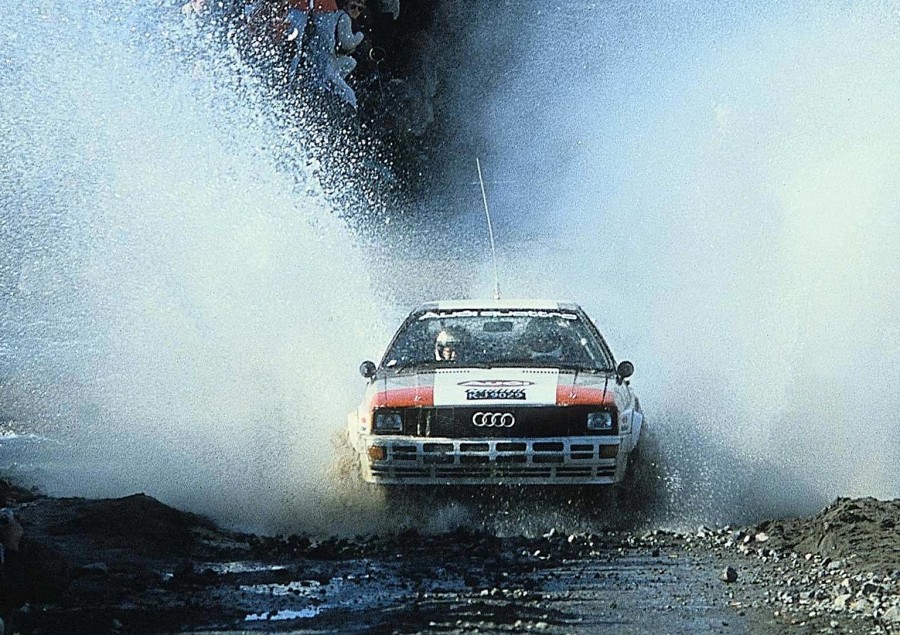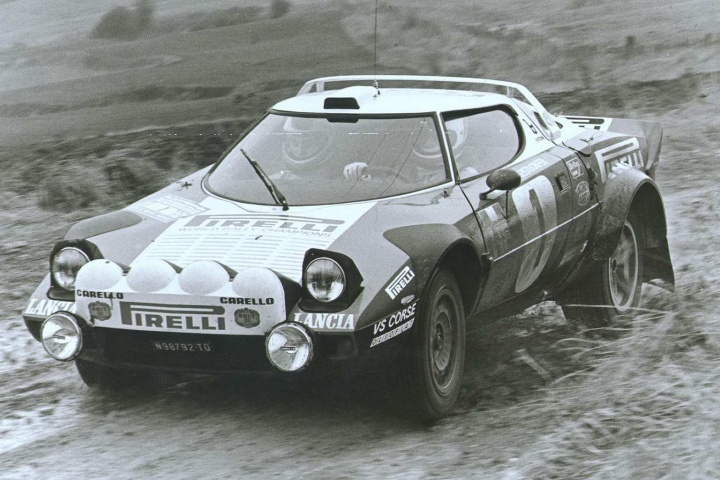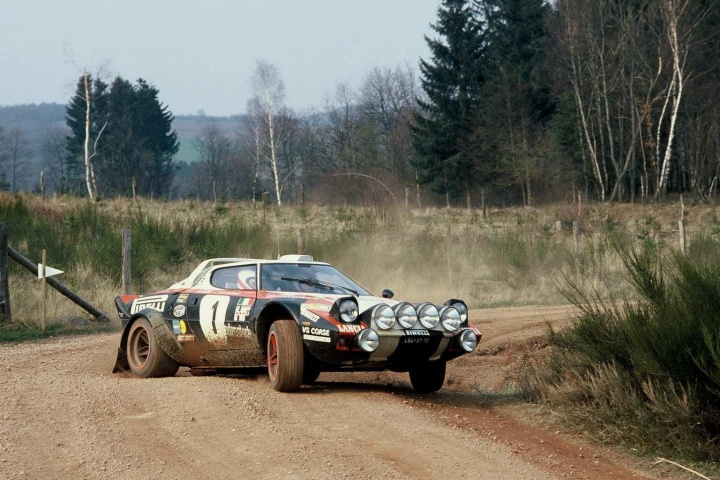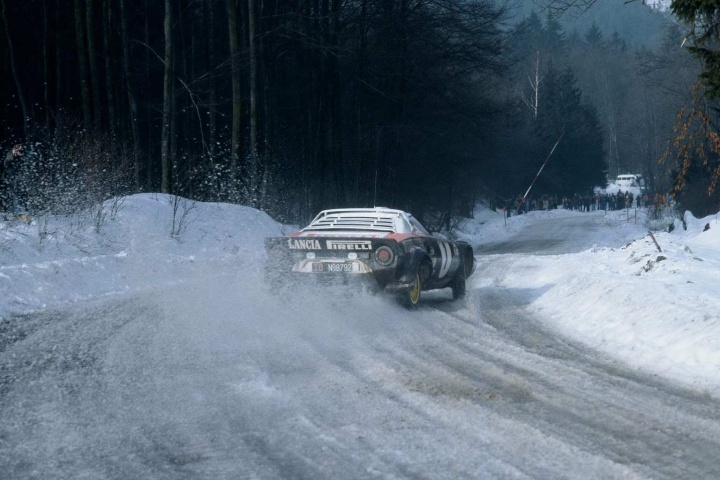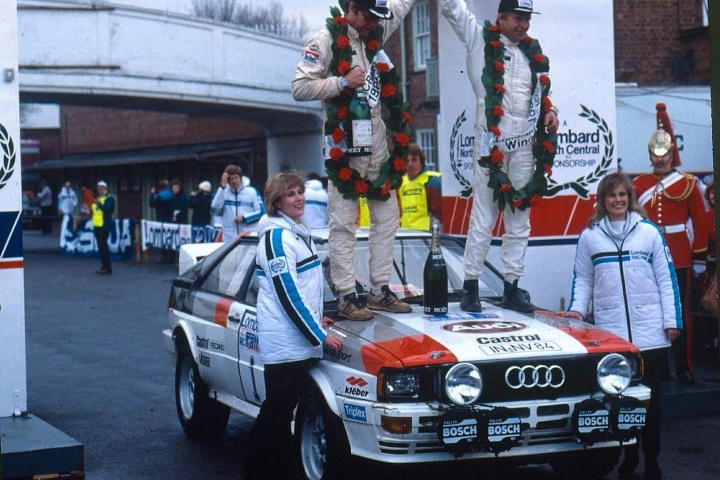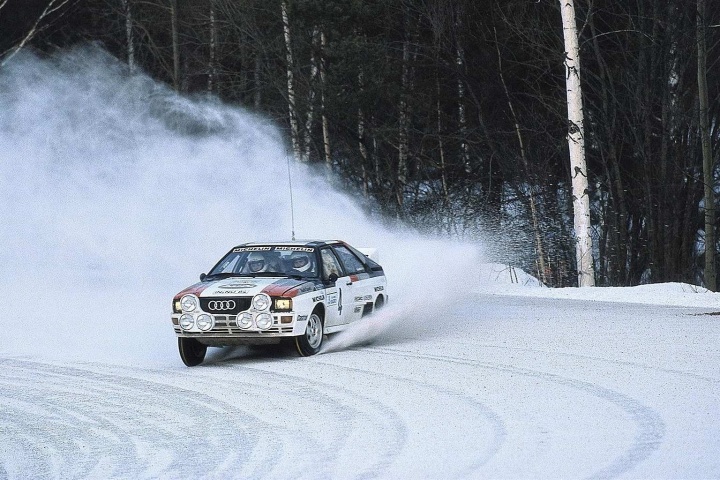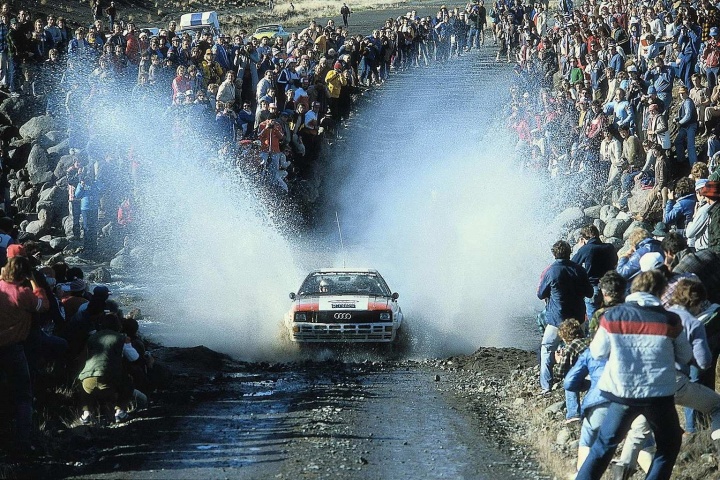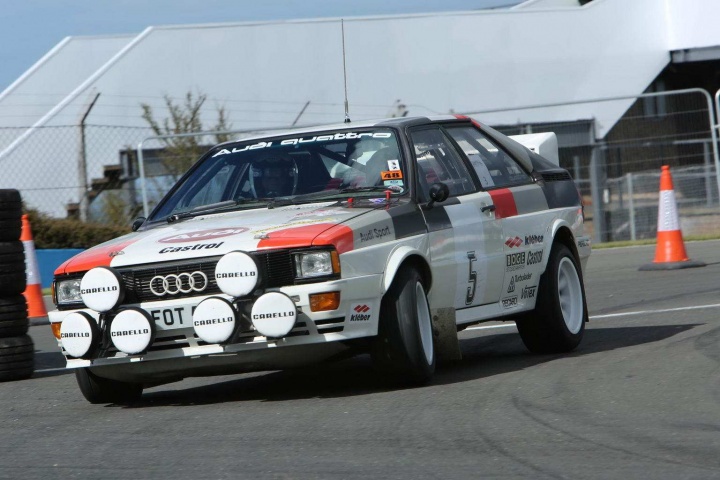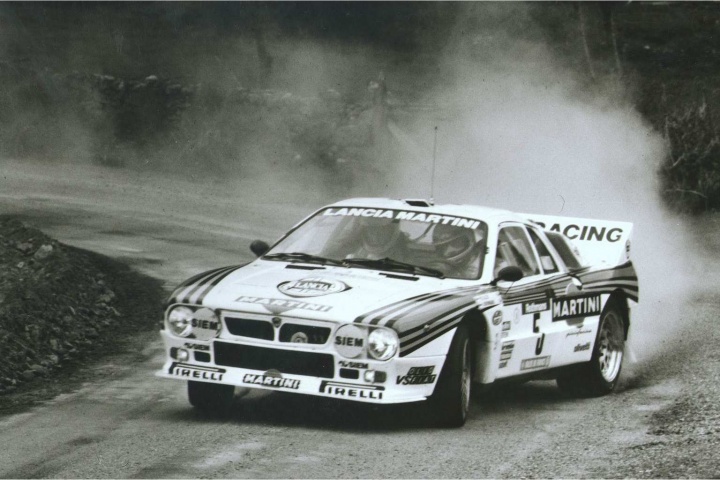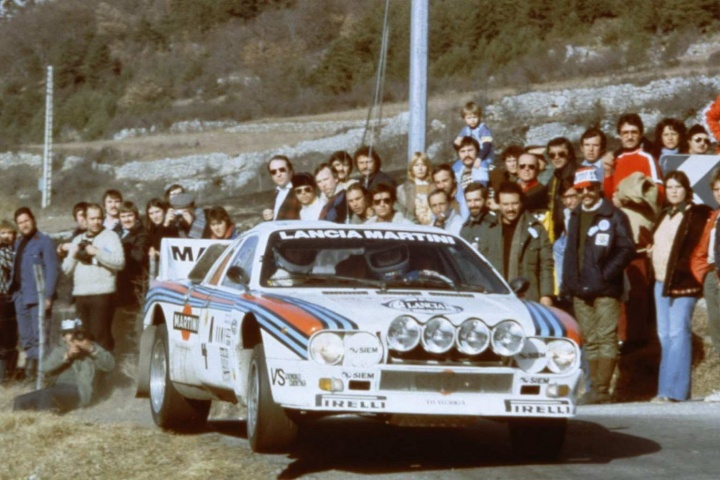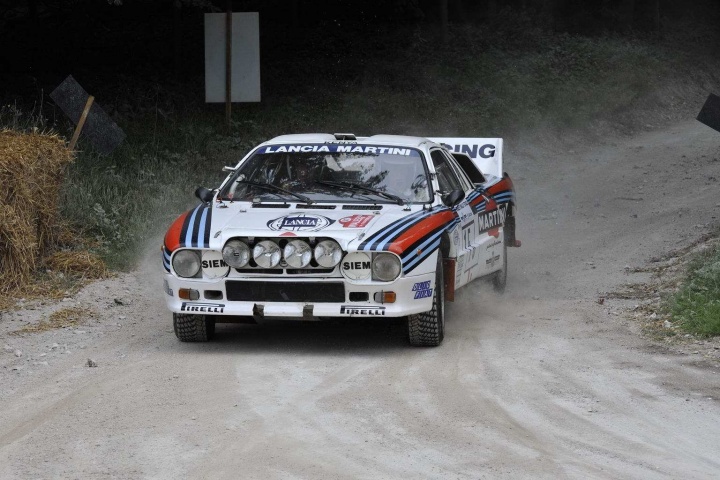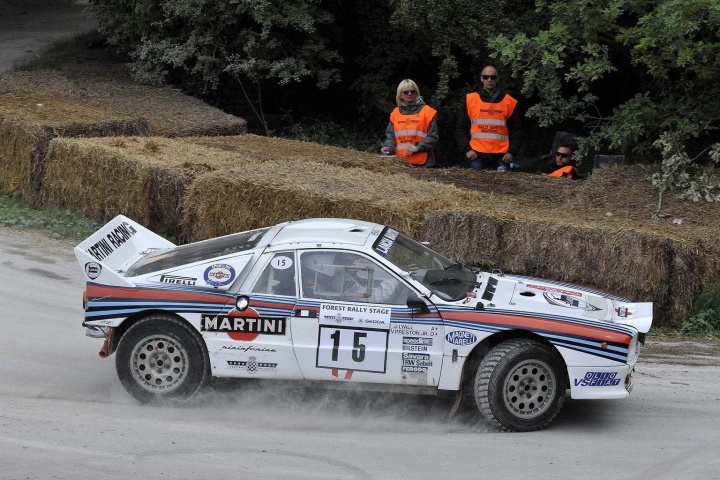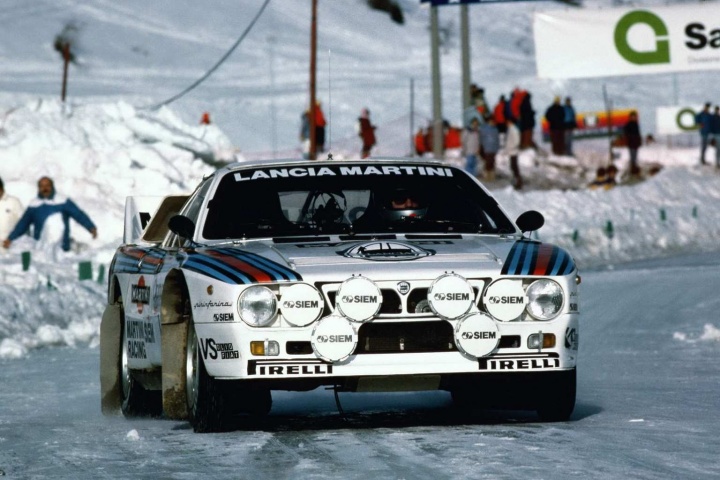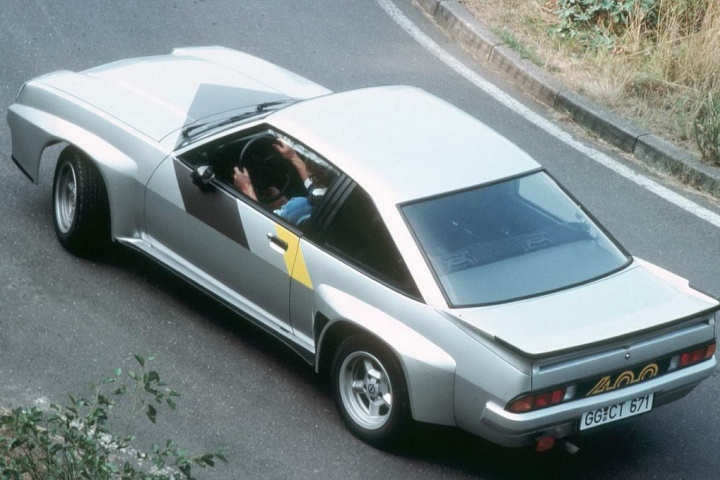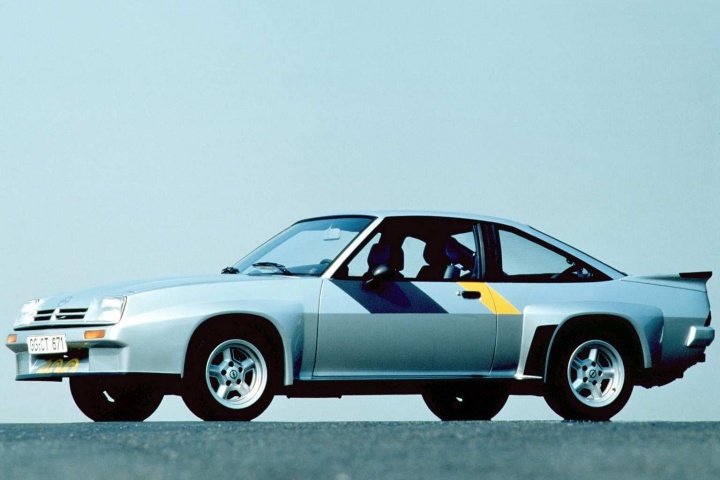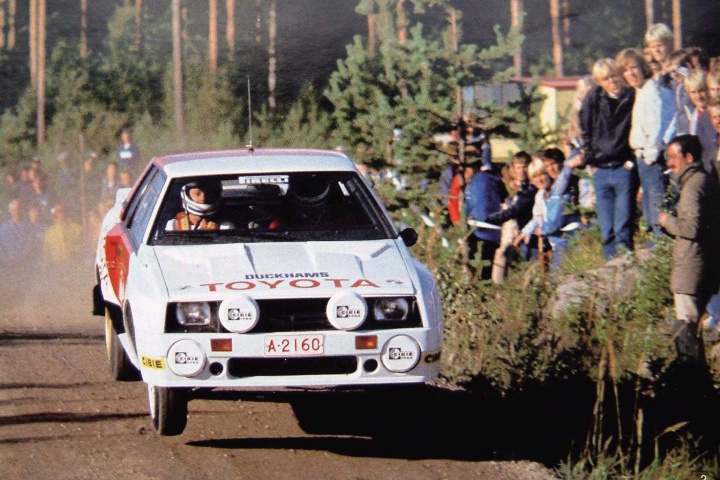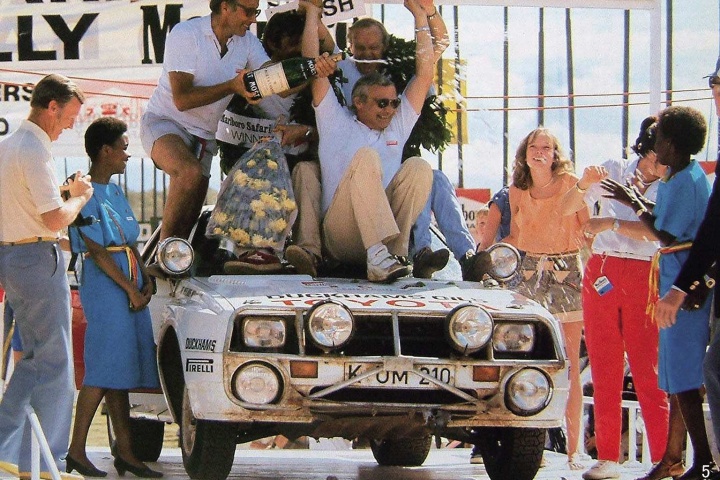In the first of a new series, we investigate the rise and fall of one of motorsport's most exciting and dangerous eras.
Thirty minutes: the timesheets looked scarcely believable and frantic calculation checking ensued. Ominously, the figures were correct. Thirty minutes was the margin that Hannu Mikkola's development Audi Quattro would have beaten its nearest opposition by, if it was running in the main field as opposed to running as a course car in a national-level Portuguese event in 1980. Audi, without any real rallying pedigree up to that point, had changed the sport forever.
All-wheel drive is so ubiquitous now in rally and road cars that it seems crazy to think that it has only reached the mainstream public in the last 40 years or so. Jensen's pioneering Interceptor was rarely seen even when new, and it took a combination of FISA (now the FIA) overturning its ban on all-wheel drive in competition in 1979, and Audi's chassis engineers to exploit the concept and overcome the inherent weight issues before it was regarded as a viable solution. Rallying up until then was dominated by rear-wheel drive machines like the Ford Escort, Fiat 131 and Lancia Stratos (which can itself be regarded as a precursor to Group B, as its sole purpose was to win rallies). Cars were split into groups ranging from Group 1 to Group 6 depending on modifications (Group 1 was pretty much standard, Group 6 was sports prototype level), with Group 4 being the highest allowed for international-level rallying. Manufacturers disliked Group 4 as they felt that the production numbers required for homologation (400 of a particular model within 24 months), along with the other regulations restricted their chances to win rallies, and they gnawed at FISA for a solution.
That solution came in 1983, in the form of Group B. This replaced both Group 4 and Group 5 in FISA's racing and rallying categories. Homologation was set at 200 cars, with ‘'Evolution'' models only requiring 20 vehicles to be built in order to achieve eligibility. However, the most radical and exciting aspect of the new rules was the freedom it now afforded designers. Competition vehicles no longer had to be based on mass-produced models, so even makers without a car that fitted easily into the old Group 4 class could potentially enter the top echelon of rallying with a purpose built machine for the job. The replacement of Group 5 meant that Group B cars would also see action in circuit racing, but the category's popularity in that field was miniscule compared to the effect it would have on the rallying world...
The first contenders
While the 1983 Monte Carlo Rally marked the first event to be ran under the new Group B rules, most cars entered were still in Group 4 specification. This was a rather subdued start to the most significant era in rallying's history, but the sheer pace of development over the next few years would astound and amaze all involved in the sport. For the purpose of this story I will focus on cars homologated into Group B, rather than their Group 4 predecessors.
Audi Quattro
The first Group B Quattro was almost identical to the Group 4 car, and therefore carried over that car's production-based philosophy. Audi was always keen to push the link between road and competition models, a concept that would end up hindering its competitiveness as the years went on. Based on the 80 Coupe, the Ur-Quattro used a longitudinally-mounted turbocharged five-cylinder engine, originally pushing out 300hp from its 2.1 litres. All-wheel drive was its obvious advantage, but the complexity of the system led to numerous reliability issues in the early events. The Quattro was heavy, with that long engine hanging out over the front axle tipping the chassis balance towards understeer. The transmission was also quite agricultural in its operation, with a fixed 50:50 torque split between front and rear and no centre differential, leading to some interesting moments in tight corners, due to the fact that the handbrake couldn't be used. Despite the drawbacks, nothing could touch it when grip was low, and the Audi set a pattern that manufacturers had no choice but to follow.
Lancia Rally 037
Abarth's Project #037 was the first car to really utilise the Group B regulations. Loosely based on the Beta Monte Carlo silhouette, but only sharing the centre chassis section with that car, the 037 took a design route first instigated by its Stratos cousin a decade earlier. Mid-engined and rear-wheel drive, with 280hp initially, it was a missile on dry tarmac, but would be outdated on gravel almost before it had turned a wheel. The long-stroke 2.0-litre engine was taken from the 131 Abarth program, with a Volumex supercharger added to boost power without inducing turbo lag. Power had been an issue for the engine in its Group 4 days, as its design meant it could not breathe and rev as freely as Ford's BDA screamer, but forced induction allowed for massive development potential. Innovative suspension with dual shock absorbers on the rear helped with traction issues on slippery surfaces, but in reality the Lancia pilots only stayed competitive through their sheer lunacy on the stages... Abarth had initially dismissed the all-wheel drive route as too complex, but in the background, work was already starting on one of the most fearsome weapons ever to see a rally stage.
Opel Manta 400
After the Ascona's fantastic year in 1982, culminating in the driver's world title for a certain Walter Röhrl, Opel pinned its hopes on the new Manta to build on that success. The reality was somewhat different, and the beautiful machine would only find itself on a podium when the going got rough and faster, when more fragile rivals had dropped out. The old Cosworth-tuned 2.4-litre engine was identical to the Ascona's, an unusual feature being the crankshaft, which was carried over from the diesel variant of the CIH lump. Strong and reliable, the big Opel would prove very popular with privateers, and some of you will remember the Dealer Opel Team Ireland cars taking the fight to the UK-based GM Dealer Sport machines over here in the 1980s.
Toyota Celica Twin Cam Turbo
Toyota Team Europe, under the leadership of Ove Andersson, was another outfit to persevere with two-wheel drive in the name of simplicity and reliability (notice a pattern here?), so the Celica's technical advances were limited to the 1.8-litre 4T-GTE engine, which also found use in Toyota's Group C endurance racers of the time. Ironically, the turbocharged units turned privateer teams off the idea of running the car because of cost, and the unwieldy coupe was another machine that thrived on rougher rallies. Marketing constraints ensured that TTE would persevere with the Celica for another decade after Group B before Andersson was granted his long-standing wish to take the Corollas rallying instead.
The rallies
The 1983 calendar included all the classics, starting in Monte Carlo and taking in events like the Acropolis, Finland's 1000 Lakes and Sanremo, before finishing up with the RAC in the UK in November. The rallies themselves were much longer than nowadays, including our own Circuit of Ireland, which ran for five days up and down the country. Stages of 70km or more in length were not uncommon, with some drivers needing nicotine assistance to help get them through... Fitness wasn't taken as seriously in those days. The cars got steadily quicker as the year progressed, and the spectators loved it. The nature of rally stages makes them very difficult to police in terms of spectator control and this was starting to become a major issue, especially in places where Latin passion was evident. Numerous near misses were ominous signs that trouble was looming down the tracks.
Meanwhile, in Paris, Peugeot was in the doldrums. The company was in dire straits, but hoped its new 205 supermini would help rescue its fortunes. A motorsport program was deemed necessary for marketing, so Jean Todt was entrusted with the resources of Peugeot Talbot Sport in Velizy and told to come back with a winner. To find out what happened next, keep an eye out for the next instalment of this series. It won't make pretty reading for Quattro fans...

